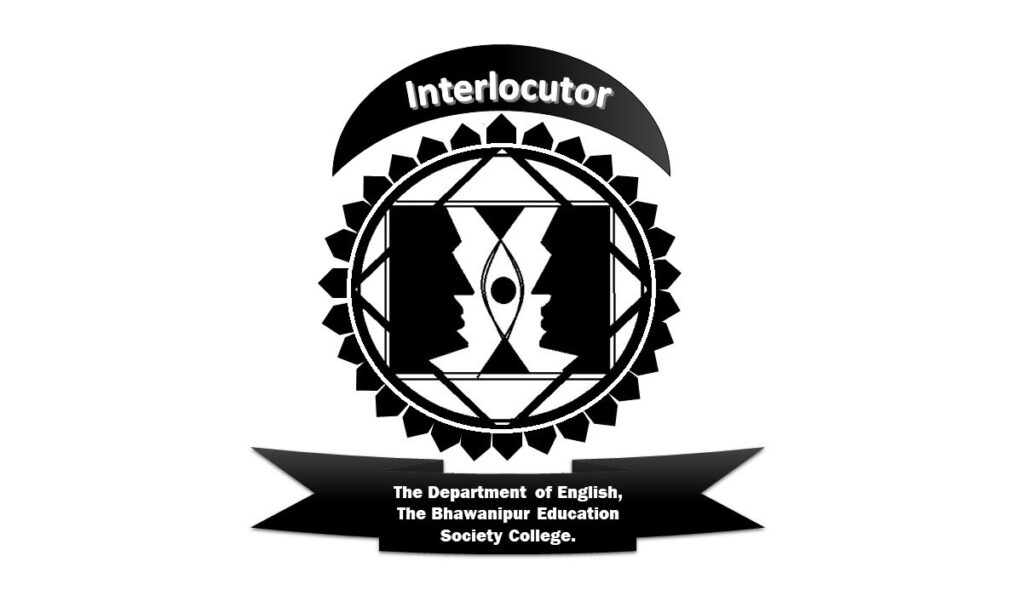Call for Papers
A peer-reviewed annual e-journal of the Department of English
The Bhawanipur Education Society College
(ISSN: 2538-7915)
Vol. IV – 2025
Interlocutor Vol. IV will comprise scholarly articles which discuss resistances to triumphalist and homogenising discourses through words, images and gestures. The present march of hegemonic powers across the globe and the rising disparities between the disempowered and the powerful compel us to engage intellectually with the dynamics and manifestations of what Nietzsche called the ‘will to power’. The conflict between demands for freedom and justice and the draconian oppressions of the privileged provide us with the two sides of resistance.Though frequently geo-political, it is also aimed at correcting the injustices of history and the entrenched systems which control society, politics, resources and production.
The language of creativity is a powerful weapon in the struggle to break through silence and invisibility, as can be shown through random instances across time and place. The power of story-telling is poignantly exemplified in the fate of Ghassan Kanafani, the Palestinian writer and critic. According to Barbara Harlow (Resistance Literature, 1987) Kanafani first used the term ‘resistance’ in connection with Palestinian literature in a piece translated as Literature of Resistance in Occupied Palestine: 1948-1966 (Harlow, p.2) Assassinated in 1972, he was remembered as ‘a commando who never fired a gun’ (The Daily Star, 1972). In another instance, in Alan Moore’s graphic novel V-for-Vendetta (1982), the masked V points out that silence is fragile: the more complete the hush, the more shocking is the thunderclap. In Shyam Benegal’s Ankur (1974), a stone flung at the landlord’s shuttered window splinters the glass in a gesture of defiance which reverberates beyond the cinema. In Peter Weiss’s The Aesthetics of Resistance (1975), an absence – the missing Heracles, initiates the counter-imaginary of a leader, indicating the affective power of art to initiate change.
Since the mid-twentieth century developments in theory and critical practices have created bridges between academia and activism. Like the blue whistling thrush which sings in many notes, numerous movements in literature, arts and the media have reflected the constant tussle between what exists and what desires to come into existence.
Interlocutor Volume IV will include a broad range of articles that engage with the idea of resistance as it is theorised, performed, visualised and written about. A list of the suggested fields is provided below. Relevant articles beyond the topics listed will also be considered for publication if deemed suitable by the board of editors and the peer reviewers.
Suggested areas:
- After Nietzsche: ‘hidden histories’ and ‘the world as a play of forces’
- The oppression of binaries and resistance to them
- Postcolonial/decolonial responses to colonial representations in literature and arts
- Nationalisms and subnationalisms
- Racial politics and cultural representations
- Post-structuralist readings of texts and cultures
- Resisting patriarchy: Feminist interrogations in writing and representations
- Questioning heteronormativity: the politics and performativity of gender and sexuality
- The voice of the subaltern
- The constructs of folk versus classical/high culture
- The challenge of countercultures
- Dalit perspectives
- Disability studies
- Environmentalism and challenges to developmental narratives
- Ecofeminism
- Literature as an arena of resistance
- Comedy and satire as resistance
- Prison writings
- Reportage as resistance
- Performance as resistance
- Cinema of resistance
- Mass media and resistance in the digital era
- Fashion and pop culture as resistance
- Food as resistance
- Archiving histories of resistance in museums
- Independent films vis-à-vis the studio system
- Little magazines and niche publishing houses
- Faith as a language of resistance
- Resistance industry
Last date of submission: 25th June, 2025
Stylesheet: See submission guidelines
Ethical Policy: See publication ethics
Contributors are requested to strictly adhere to the submission guidelines and the ethical policy of the journal. Non compliance of the aforementioned may lead to rejection of the submission.
Download CFP

